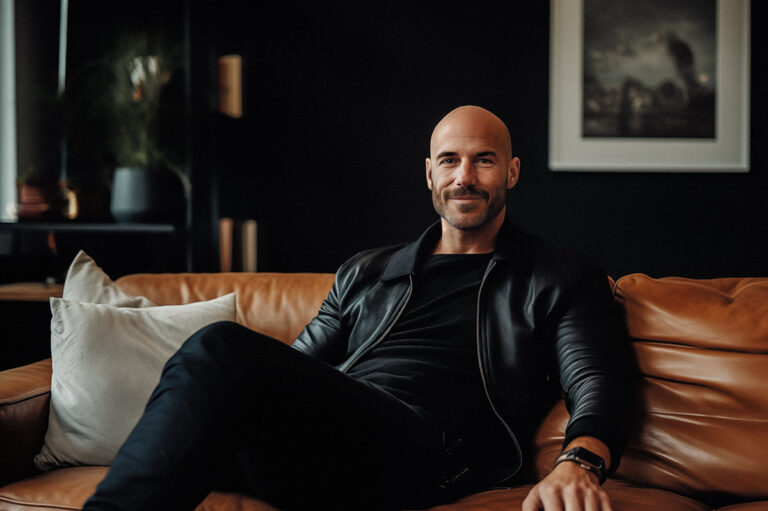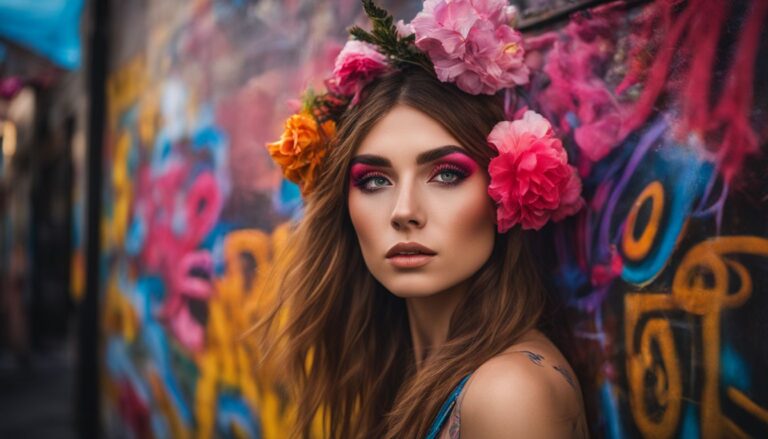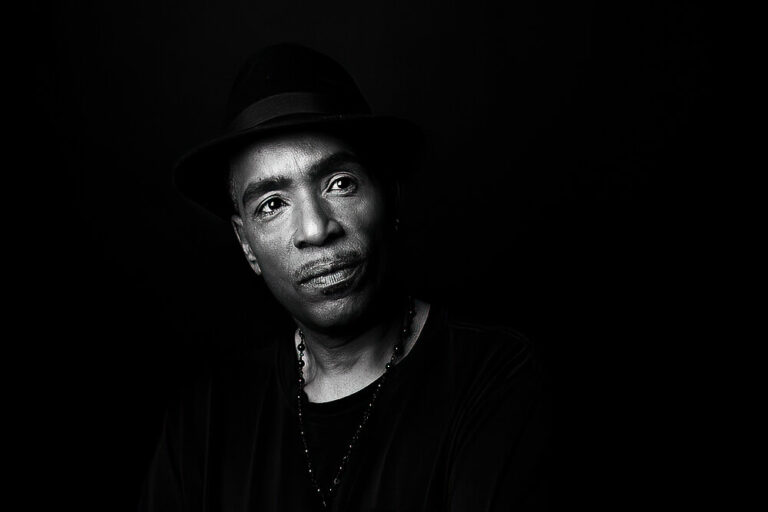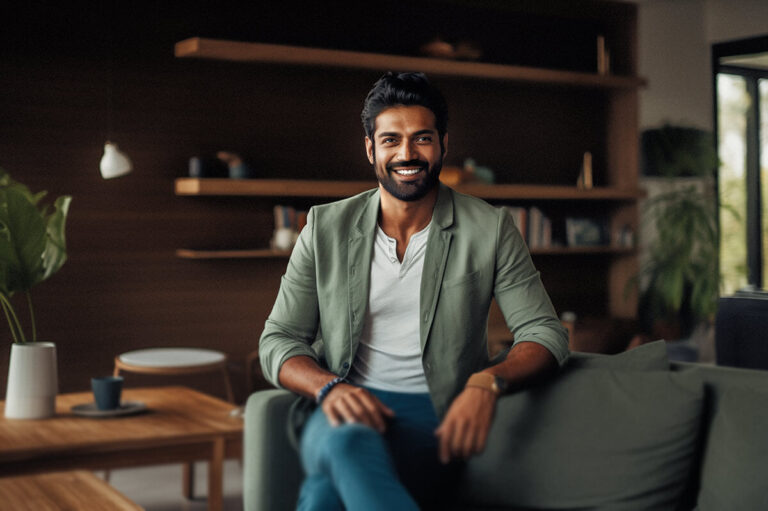The Essence Of Expression: Conveying Emotion In Portraits
Capturing the true spirit and emotions of someone in a portrait is undoubtedly an immensely challenging endeavour. Many artists and photographers grapple with conveying the rich tapestry of feelings, thoughts, and personalities that dwell within their subjects through their visual artistry.
This predicament arises because truly showcasing genuine emotion transcends merely taking a photograph or painting a visage; it necessitates delving into the essence of an individual’s being.
In our journey, we’ve encountered this complex challenge head-on, seeking ways to capture, comprehend, and articulate the intricate emotions of our subjects with greater clarity.
Through our exploration, we’ve discovered that portraiture has served as an invaluable medium for artists across eras to encapsulate the profound depths of the human condition. Our investigation into this artistic discipline has unearthed strategies that could offer solace in bridging the apparent disconnect between what is observed on the surface and what bubbles underneath in raw emotional depth.
This article aims to help you understand emotional expression in portraits by employing techniques ranging from scrutinising facial expressions to selecting hues that evoke a particular ambience.
We share insights on how these methodologies can profoundly assist you in crafting artworks that resonate profoundly with viewers on a vibrant plane. Are you prepared to alter your perception towards portraits?
Key Takeaways
- Portraits show real emotions and connect people. Artists use facial expressions, body language, colour, and light to make art that feels true.
- Understanding how faces move helps artists catch feelings like happiness or sadness. Over 40 facial muscles work together to show what we feel inside.
- The colours in a portrait can evoke different emotions. Bright colours might make us happy, while dark ones seem mysterious or sad.
- How someone stands or moves their hands in a picture tells us more about their feelings. Even where they are and what’s around them adds to the emotion of the portrait.
- When we look at a portrait, our feelings play a big part in how we see it. A subject’s direct look can draw us in and make us think about their feelings and ours.
The Importance of Emotional Expression in Portraits

Emotional expression in portraits holds immense significance. It reflects the subject’s inner essence and evokes a profound emotional response from viewers. The portrayal of emotion in portraiture has evolved, with various methodologies employed to convey the subject’s authentic emotions.
Analysing emotional responses within portraits sheds light on the universal nature of human emotion and its role in connecting with audiences. Contemporary portrait photography places high value on capturing genuine emotional states, creating portraits that resonate deeply with viewers.
Evolution of Emotional Expression in Portraits
Portraits have come a long way from showing stiff, unemotional figures to capturing the depth of human feelings. Previously, artists aimed for an ideal look rather than a genuine expression.
They focused on making people look perfect and noble. But as we explored art’s history, we noticed a shift. Our work in portrait photography has shown us how important it is to catch genuine emotions.
A picture should capture the soul, not just the smile.
Nowadays, artists and photographers like us strive to show real moments and feelings. Contemporary creators break old rules to present honest emotions in their art. This change makes portraits more potent because they tell a story about real life, not just an imagined perfection.
Portraits can show joy, sadness, or even confusion with stunning clarity.
Methodology of Conveying Emotion
Building on the evolution of emotional expression in portraits, we delve into the methods used to capture emotion. This journey has shown us how expressions and feelings have become more authentic in art.
Now, we focus on how artists bring these emotions to life.
We closely examine subjects’ faces and bodies to convey desired emotions. Faces show feelings clearly through smiles or frowns. Bodies can tell stories, too, with a slouch showing sadness or an upright stance signalling pride.
Colours also play a big part; dark hues might suggest mystery, while bright ones can express joy.
In our work, we’ve seen firsthand the power of lighting in revealing a subject’s mood. Soft light can create gentleness, while harsh shadows often hint at conflict or depth within the person depicted.
The setting is also crucial; a calm background can make the viewer focus on the subject’s inner state.
By carefully combining these elements—facial expressions, body language, colour choices, lighting, and setting—we try to create portraits that look and feel like somebody.
Analysing Emotional Responses
We study emotional responses to understand how viewers connect with portraits. Art digs deep into human feelings and shows more than we see on the surface. Portraits capture many emotions and start a talk between the creator and the observer.
This conversation is vital in making art that touches people’s hearts.
Our work looks at psychological viewpoints on how people react to artworks emotionally. We explore this interaction, focusing on how facial expressions and body language in portraits can move viewers.
This study helps artists create works that speak to others, inviting them to a deeper understanding of the human state.
The Universality of Emotion in Portraits
Emotions in portraits speak a universal language. They capture the essence and personality of people from all over the world, no matter their culture. This power to convey emotion bridges gaps between different societies.
It creates a connection that goes beyond words.
Our study shows that both artists and viewers share this deep emotional experience. Painters use facial features, body language, and colours to show feelings like happiness or sadness.
People looking at these pictures can feel those emotions, too. This shared understanding proves that the art of capturing emotions in portraits holds significant global importance.
Contemporary Portraiture and Emotional State
We explore how modern artists capture emotions in their work. They use new methods and ideas, making portraits that show genuine feelings. This change changes how we see emotions in art.
Artists pay close attention to the mood and atmosphere of a portrait, as well as the subject’s facial features and body language. Using colour and composition, they create stunning photographs that connect with viewers on a deep level.
This approach brings the essence of a person to life, allowing us to feel what they feel.
Techniques for Conveying Emotion

Understanding facial expressions is crucial in capturing the subject’s emotions. Analysing body language and context aids in conveying a broad spectrum of human emotions. Using colour and composition adds depth to the image, allowing viewers to connect with the subject’s mood on a deeper level.
Understanding Facial Expressions
Capturing the essence of a subject in portraits hinges on grasping their emotional state. Grasping facial expressions plays a pivotal role in this process. Here is how we approach it:
- Study the Basics of Expression: We start with the fundamental emotions—happiness, sadness, anger, surprise, fear, and disgust—each of which alters the face in unique ways.
- Observe Subtle Changes: Small shifts can signal big feelings. A slight squint can show doubt or thoughtfulness, while a tiny smirk might indicate amusement or scepticism.
- Practice Makes Perfect. We often practice sketching faces or observing people in various settings to refine our understanding of how emotions appear on different faces.
- Use Reference Materials: Anatomy books and photos help us learn how muscles move to create expressions.
- Pay Close Attention: In conversations, we watch for changes in facial expressions closely. This helps us capture genuine emotions rather than forced smiles or poses.
- Capture Fast: Emotions change quickly. We have learned to work swiftly to catch the fleeting moments that convey deep feelings.
- Adjust Lighting: Lighting can enhance or soften facial features, which affects how an emotion is perceived.
- Ask for Stories: Sometimes, we ask subjects to share stories that evoke certain emotions, allowing us to see those feelings naturally come through.
- Mind the Eyes: They are often called windows to the soul for good reason; they reveal much about a person’s emotional state.
- Consider Body Language: It supports facial expressions and adds depth to portraying emotions.
From personal experience, connecting with our subjects before photographing them has allowed us to notice and capture more nuanced expressions effectively. This connection makes them feel comfortable showing genuine emotion in front of the camera lens, a crucial element in creating powerful portraits that resonate with viewers at first glance.
Anatomy of Facial Expressions
Moving from the broad understanding of facial expressions, we delve into the anatomy of these expressions. They are key in creating portraits that reflect thoughts, feelings, and experiences. Here is a breakdown:
- Muscles play a significant role. Our faces have over 40 muscles that work together to show emotions.
- The eyes, often called windows to the soul, capture emotion and direct the viewer’s gaze.
- Eyebrows move up and down, helping to display surprise or concern.
- The mouth can smile, frown, or be set in countless ways to convey happiness, sadness, or anger.
- Cheeks rise when we smile and become tight when we are angry.
- The forehead wrinkles with worry or smooths out in calmness.
Understanding these parts helps artists bring the subject’s essence to life on canvas and makes photography stand the test of time by capturing genuine emotions. Artists use this knowledge to connect the viewer and the subject through mere glances at their work.
Each facial feature expresses complex emotions beyond simple happiness or sadness—looking closely at how these elements can reveal deeper feelings like contemplation, excitement, or anxiety.
Using colour and light adds depth to these expressions in art and photography—soft light might suggest warmth and affection, while harsh shadows can introduce tension or mystery.
Artists’ ability to evoke feelings rests on their mastery of this intricate interplay—their work goes beyond capturing a physical likeness to unveil the emotional state behind it.
This exploration encourages professionals in fine art and contemporary portrait photography to pay close attention to the technical aspects and the emotional impact conveyed through expressions.
Capturing Common and Complex Emotions

Understanding facial expressions and the anatomy of emotional responses sets the stage for capturing common and complex emotions in portraits. Employing techniques such as interpreting body language, using colour and composition, and understanding the role of the observer enriches the portrayal of emotions. Here’s how to elevate your portraiture by effectively capturing common and complex emotions:
- Interpret Body Language
- Analyse the subject’s posture, gestures, and movements to uncover underlying emotional states.
- Utilise poses that convey vulnerability, strength, serenity, or other nuanced emotions.
- Harness the psychological impact of colour to evoke specific emotional responses.
- Experiment with composition to create visual narratives that elicit varied emotional interpretations.
- Anticipate how viewers may interpret emotional cues in your portraits.
- Leverage elements such as eye contact and positioning to engage viewers emotionally.
- Utilise cutting-edge photography technologies that capture subtle nuances, allowing for authentic emotional portrayal.
- Integrate digital post-processing techniques to enhance emotional resonance while maintaining authenticity.
- Infuse storytelling elements into your portraits to provoke intellectual and emotional engagement from your audience.
- Incorporate symbolism and metaphors into your compositions to convey deeper emotional layers.
- Draw from personal encounters with diverse emotions to infuse authenticity into your portrayals.
- Extract inspiration from real-life instances where common and complex emotions were expressed vividly.
By enhancing our ability to capture these emotions effectively through our artistry, we invite our audience on a profound visual journey into the complexities of human feelings.
Body Language and Context
Body language and context play a crucial role in conveying emotion in portraits. Understanding the subject’s posture and surroundings enhances the emotional depth portrayed in the artwork.
- Posture: The subject’s body language communicates emotions such as confidence, vulnerability, or defiance.
- Gestures: Specific hand movements and facial expressions reveal feelings such as determination, hesitation, or excitement.
- Surroundings: The setting and objects around the subject can evoke emotions like nostalgia, tranquillity, or agitation.
- Proxemics: The spatial relationship between subjects and their environment conveys intimacy, isolation, or connection.
- Cultural Cues: Contextual elements such as clothing or symbols reflect cultural norms and emotional significance.
These aspects intertwine to convey diverse emotional narratives within portrait art.
Using Colour and Composition
When creating portraits, using colour and composition is pivotal in evoking emotions. By strategically employing different colours and compositional elements, artists can convey a wide range of feelings, from joy and happiness to sadness and melancholy.
This combination allows for the creation of emotionally impactful portraits that captivate viewers. Contemporary artists continuously explore innovative ways to utilise colour theory and composition to convey emotion, enabling them to create powerful visual narratives that resonate with audiences.
The choice of colours plays a significant role in setting the mood and eliciting specific emotional responses from the viewer when examining a portrait. Additionally, employing varying compositional techniques enhances the overall impact of the artwork, guiding the viewer’s gaze towards critical elements that embody emotion—ultimately culminating in an immersive experience where emotion transcends from canvas to observer.
The Role of the Observer in Interpreting Emotion
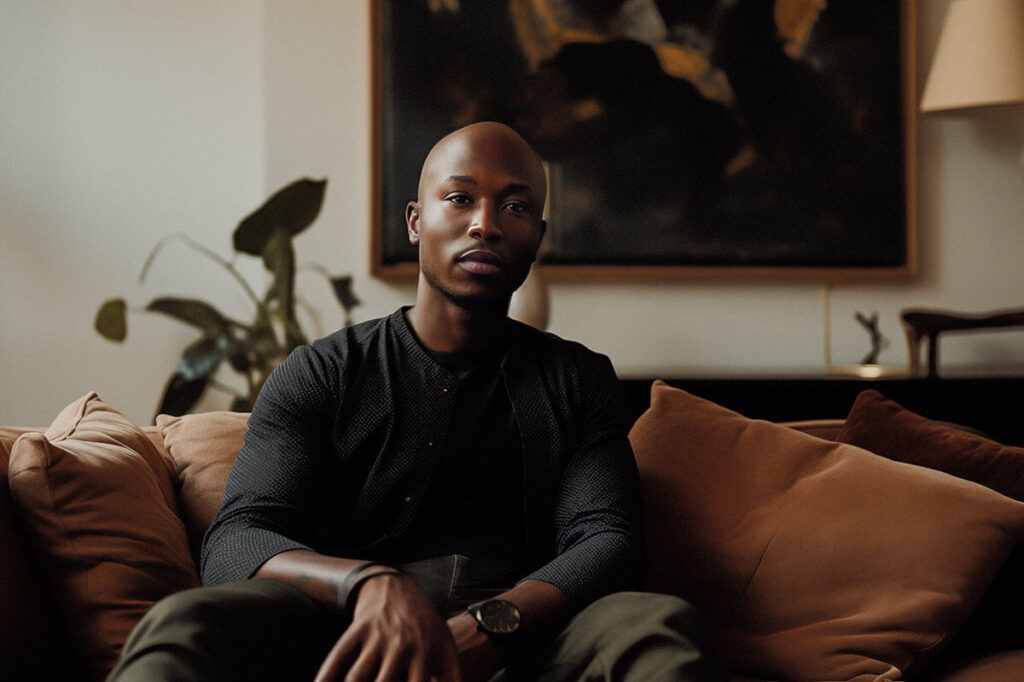
The observer plays a crucial role in interpreting emotion in portraits. They bring their personal emotional experiences into the interpretation and are deeply affected by the subject’s gaze, which has the power to evoke strong emotions.
Personal Emotional Experiences
As professionals, we understand the impact of personal emotional experiences on the interpretation of portraits. The observer’s emotional state influences their perception, creating a unique and individualised connection with the artwork.
This personalised emotional experience engages viewers deeper, fostering a dialogue between the artist’s intent and the observer’s feelings.
Understanding this essence of expression is vital in creating compelling portraits that resonate with audiences. Emotional authenticity connects us to art and evokes empathy, which becomes an integral part of our experience as both creators and appreciators of portraiture.
The Power of The Gaze
The direct gaze of a subject in a portrait holds immense power. The piercing eyes convey emotions and captivate the viewer, influencing their perception of the portrayed individual.
This potent visual engagement is a significant artistic tool portraitists use to evoke strong emotional responses from observers, imbuing the artwork with life and depth.
Throughout history, artists have strategically employed varying levels of eye contact in portraits to communicate different messages and elicit specific feelings from the audience. The intensity of the gaze can shape how viewers interpret the subject’s emotional state, creating an intimate connection that transcends time and culture.
Art Should Make You Feel Something
Art should evoke emotions, stirring something profound within us. It is not merely about what we see but how it makes us feel. Portraits capture a spectrum of human emotions, creating a powerful connection between the subject’s emotional state and the observer’s response.
The portrayal of emotion in art is ever-evolving. It reflects the complexities of the human experience and invites viewers to delve into their emotional responses. This interaction between the artwork and our emotions enriches the artistic dialogue, offering a personalised experience beyond mere visual representation.
In essence, art can initiate an intimate conversation with our innermost feelings. When we immerse ourselves in portraits that convey raw emotion, we are not simply passive observers but active participants in interpreting and understanding complex human expressions.
Conclusion
In conclusion, understanding the importance of emotional expression in portraits enriches our comprehension of the human condition. Techniques for portraying emotion offer a unique lens to interpret the evolving landscape of contemporary portraiture.
The portrayal of emotion has evolved from idealised depictions to more authentic representations. Mastering the portrayal of emotions in portraits will elevate artwork to new heights for both beginners and experienced artists.
Lastly, delving into these aspects can unlock the secrets underpinning powerful and evocative portraiture.
FAQs
Q: What is portrait photography?
A: Portrait photography is a genre of photography where the main focus is on capturing the expression and emotion of a subject, usually an individual or a group.
Q: How can one capture emotion in portraits?
A: To capture emotion in portraits, one must deeply understand the subject’s feelings and emotions. Paying close attention to the subject’s facial expressions and body language is crucial.
Q: What are the key aspects of portrait photography?
Q: What is the importance of emotion in portrait painting?
A: Emotion in portrait painting adds depth and a human touch to the artwork. It helps the viewer connect with the subject on a personal level.
Q: How can one master the art of conveying emotion in portraits?
A: Mastering the art of conveying emotion in portraits requires capturing the essence of the subject’s emotions and translating them into a powerful visual representation.
Q: What role does a portrait photographer play in capturing emotion?
A: A portrait photographer creates a visual narrative that conveys the subject’s emotion. They use their skills to capture the subject’s essence in a single frame.
Q: Why is capturing emotion in portraits considered a powerful tool?
A: Capturing emotion in portraits is considered a powerful tool because it allows the viewer to connect with the subject on an emotional level, creating a lasting impact.



